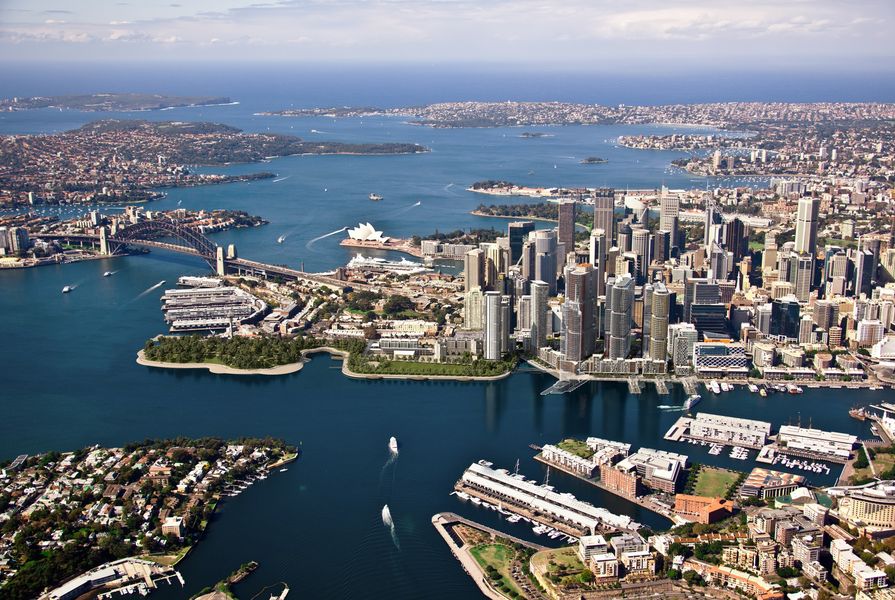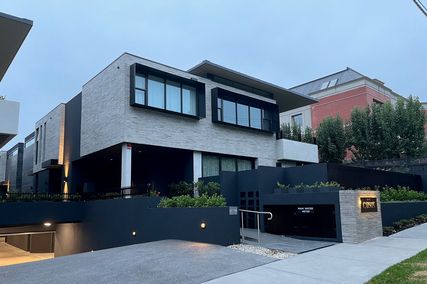Back in May 2010, Architecture Australia published a set of opinion pieces on the development of Barangaroo (East Darling Harbour) in Sydney. It is the city’s biggest urban development in many years and a highly controversial project. My own contribution to that issue was an attempt to outline the intense debates taking place over the urban design implications of the masterplan. The disputes and discontent have been ongoing and, although the project still hasn’t broken ground (not counting site remediation), we thought it was time to survey the fractious landscape once again.
Given all the attention being paid to Australia’s current mining boom, it seems appropriate to observe that Barangaroo has continued to provide a very rich vein of squabbling and misadventure. In March of 2011, one last cynical contribution from the ousted labour government was to excise sections of Barangaroo from state environmental planning laws relevant to a court case being decided. The presiding judge described it as “unreasonable conduct.”
Since then, after the current Liberal government came to power, there have been resignations, reviews, and … a casino. Sydney’s Lord Mayor, Clover Moore, delivered a petition of more than eleven thousand names calling for an enquiry. Paul Keating quickly labelled the petitioners “sandal-wearing, muesli-chewing, bike-riding pedestrians;” then promptly resigned from the design review panel because the new planning minister asked him to stop being, well … Paul Keating.
Looking to defuse the situation, the government commissioned a review into the development’s compliance with relevant planning processes: Shelley Penn and Meredith Sussex parachuted in from Melbourne to announce that, apart from needing more design review, we could all move along, as there was nothing to see. A review of the site remediation process returned similarly positive results. Still, Barangaroo was an important catalyst for the O’Farrell government’s repealing of “Part 3A” – the controversial piece of planning legislation that allowed the development to be called in and avoid normal approval processes.
Another O’Farrell initiative was a design review including Penn again, as well as the then NSW Government Architect Peter Mould. The review panel liked a lot of what they saw, but thought the towers should be pointier (a view shared by most Sydney taxi drivers). Mr O’Farrell decline to take this bit of advice on board.
Meanwhile, continuing government inertia has meant next to no progress on ensuring that Sydney’s already-strained CBD public transport facilities can cope with Barangaroo’s projected contribution of twenty-two thousand extra workers and residents. Lend Lease has inched towards commencement on site, while continuing to rile concerned observers by playing a shell game with parts of the program (first you see the childcare centre, then you don’t). James Packer recently provoked uproar with a casino proposal for the heart of the “civic precinct” (apparently he’s not joking), while Bob Nation quietly slipped into the new design director chair for the Barangaroo project (declining to comment on Packer’s proposal).
Amongst all this hubbub Barangaroo has been keeping a lot of design professionals off the streets, what with all the concept plans, design visioning and development, review panels and design guidance. However, a worrying aspect of all this activity is the unexamined notion of public interest; without fail, designers from all sides of the ongoing design debates suggest that this is their driving guide. The formation of a successful public domain, for the public good, is a recurrent ambition. A unified public is a myth though; what we have is multiple, often competing, publics and counter publics. The process at Barangaroo cannot manage this because it foregoes meaningful participation and deliberation. The parameters within which the site is being developed were set long ago, with little, if any, meaningful public participation (and begat a competition brief in 2005 that left little to do but array prescribed program across the site). That lack of genuine engagement has continued, and was noted by Penn and Sussex in their 2011 review.
Observing the development unfold, it’s hard not to be reminded of Sherry Arnstein’s oft-cited 1969 article, “A Ladder of Citizen Participation.” Certainly at Barangaroo we can identify the non-participation and tokenism that Arnstein labelled as “manipulation,” “therapy,” “informing,” “consultation” and “placation” far more than we can observe the citizen power provided by “partnership,” “delegated power” or “citizen control.”
The problem of inadequate participation, and the idealized, abstract public driving design work for Barangaroo, is that they attempt to avoid the very political nature of space: the project has become framed as a set of “problems” to be solved by the designers. Fuller public engagement would by no means have meant a less fraught process, but it could have allowed a more meaningful role for architects in helping to negotiate social and political issues: developing projections of future spatial possibilities to help make the best sense of conflicting aspirations, rather than delivering design “solutions” aimed at achieving consensus.
















